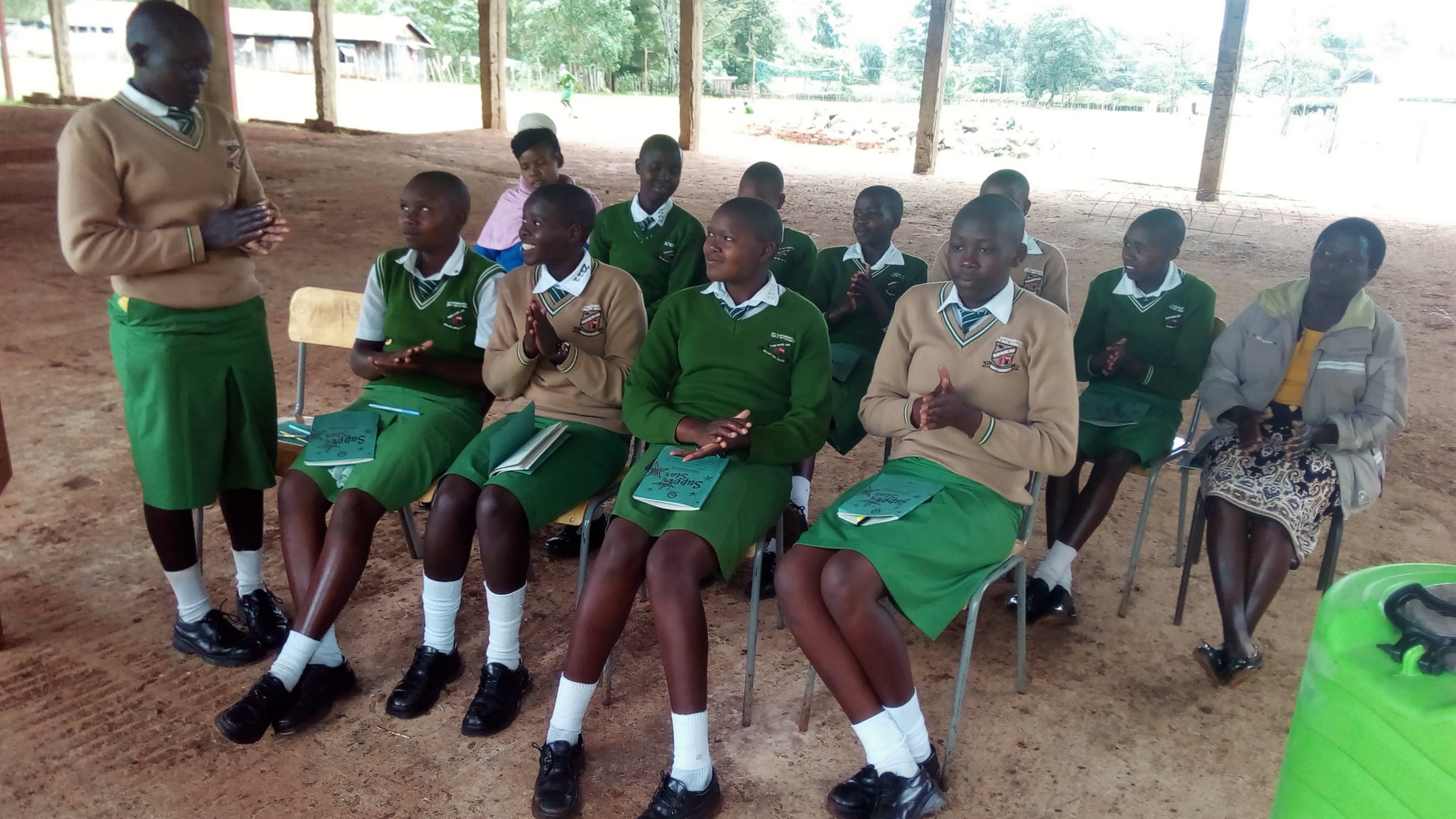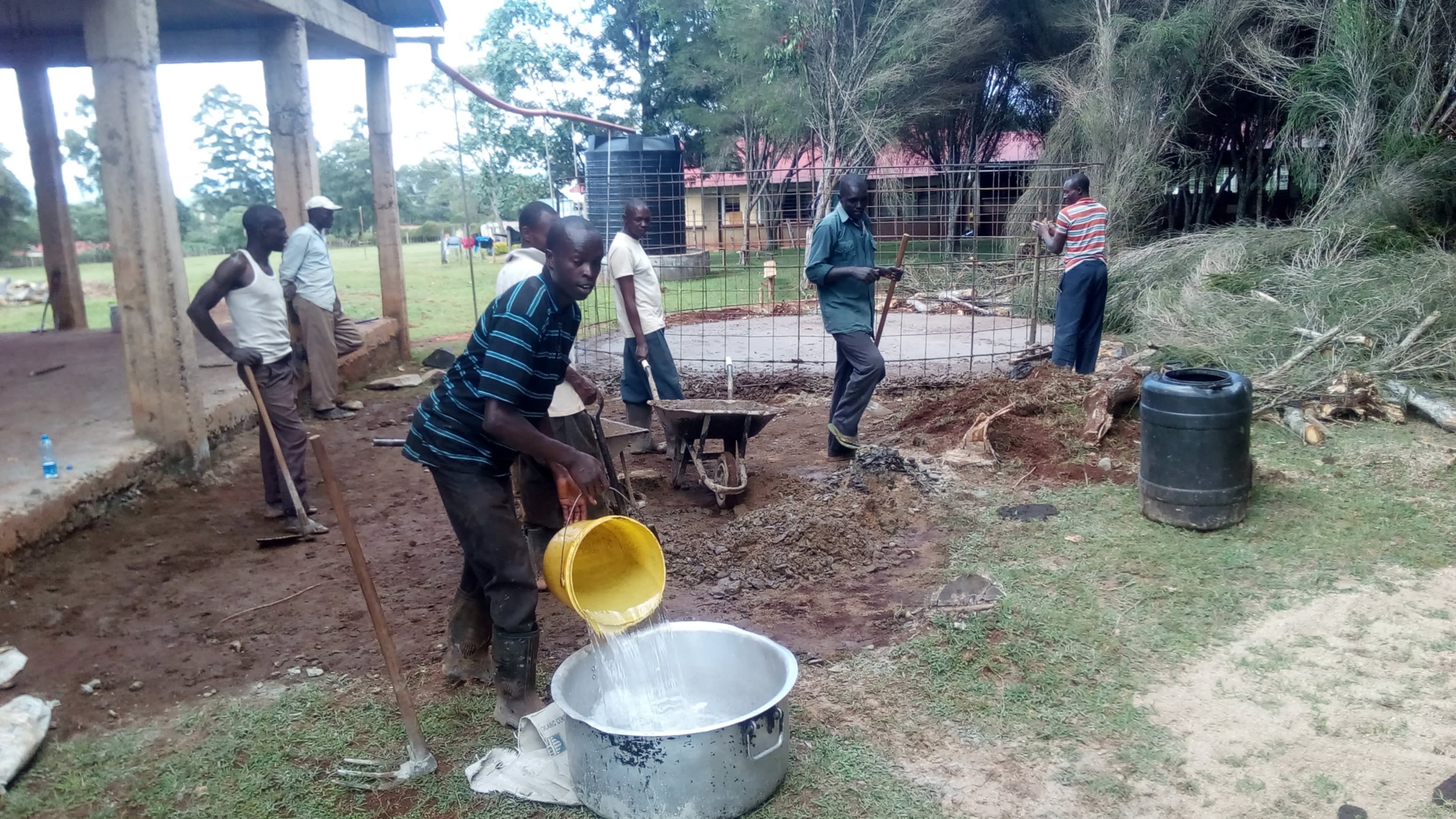This project is a part of our shared program with Western Water And Sanitation Forum (WEWASAFO). Our team is pleased to directly share the below report (edited for clarity, as needed).
Welcome to the School
Kapchemoywo Girls Secondary School was founded in 1976 by community members who donated the land on which the school is built. The school is located in Kapchemoywo Village, Kapchemoywo sub-location, Kaplamai location, Arwos Ward, Emgwen Sub-County of Nandi County. The school has a population of 220 girls and 10 teachers. The school also employs two cooks, four security guards, one secretary, one accounts clerk, one driver and one matron.
A normal day starts with students getting up very early in the morning, eating breakfast and getting ready for classes. The lessons begin at 7 AM for morning study hall, then there is a break for assembly time at 8 AM when teachers announce the schedule for the day. After, class goes from 8:15 AM to 4:15 PM with short breaks for tea and an hour for lunch. Finally, the day ends with games from 4:15 PM to 5 PM after which each student returns to her dormitories.
Bathrooms are located in the dorms, where many of the girls choose to have a bath after a sweaty hour playing in the field. Most of this institution is made up of students who depend on their parents for their daily bread. The subordinate staff relies on the school management to get their salaries, and the teachers depend on the government.
Since this is a boarding school, many activities take place both during the day and evening hours. Various subjects undertaken by the students range from sciences, humanities, maths and languages. Students attend lessons, play in the field, help clean the outside compound as well as the classrooms. This school is situated in a very quiet environment conducive to the girls' learning.
Water Situation
The school was connected to a piped water system, but those pipes rarely flow with water. There is also a hand-dug well in the area, but it only produces water for about 30 seconds before it becomes non-functional.
"We lose a lot of water, especially during rainy season, as we do not have a big storage tank that can help us to capture every drop of water. The available plastic tanks cannot accommodate much water for us. I am very much pleased to hear the good news about the plans that you people have for our school. For a long time, we as the school have been thinking of ways on how we can solve the issue of water and sanitation but have not achieved anything. This is a God-given opportunity for us and we are not going to make any mistake of letting it go away but instead, we are embracing it tightly and promise to give everything required for it to succeed," said Principal Salome.
The school sometimes has to go an extra mile to buy from vendors who ferry water using their trucks. These vendors charge between 3,000 shillings and 5,000 shillings for 10,000 liters to deliver water from a nearby town called Kapsabet. This water is used for drinking, bathing, cleaning clothes, classrooms and other school equipment; as well as watering dairy cattle and flowers.
A lack of safe water here causes the school to incur huge expenses each month. Not only that, but water from the vendors can also lead to outbreaks of waterborne diseases like typhoid and cholera.
Sanitation Situation
There are seven VIP (ventilated improved pit) latrines on school grounds. These are made of brick, cement, iron sheets and wooden doors. However, most of these have pits that are almost full.
There are 20 bathing rooms for the residents to practice personal hygiene. There are also a lot of helpful tools like clotheslines and dish racks. However, there are no hand-washing stations for the girls to wash their hands.
Principal Salome says that they've never had a chance to learn more about hygiene and sanitation, and is excited about the upcoming training opportunity.
Plans: Hygiene and Sanitation Training and Hand-Washing Stations
Training will be held for two days. The facilitator will use PHAST (participatory hygiene and sanitation transformation), ABCD (asset-based community development), CTC (child to child), lectures, group discussions, and handouts to teach health topics and ways to promote good practices within the school. The CTC method will prepare students to lead other students into healthy habits, as well as kickstart a CTC club for the school. This CTC club will oversee the new facilities, such as hand-washing stations, and make sure they are kept clean and in working condition. The two hand-washing stations will be delivered to the school, and the club will fill them with water on a daily basis and make sure there is always a cleaning agent such as soap or ash.
Plans: Rainwater Catchment Tank
A 50,000-liter rainwater catchment tank will be constructed on school grounds. Teachers, students, and parents will gather the materials needed for this project, including sand, ballast, bricks, and hardcore. This contribution will fuel a sense of responsibility for the school and community to take care of their new facilities. Once materials are mobilized, the WEWASAFO team will arrive to lead the construction effort.
With adequate clean water, the school will have water for drinking, cooking, cleaning, and hand-washing. The school will no longer have to spend large sums of money buying water from local vendors.
Plans: VIP Latrines
Two triple-door latrines will be constructed, providing six new latrines for the girls. Latrine materials will be mobilized the same way as the tank, ensuring the school feels these facilities are truly theirs. And with a rainwater catchment tank nearby, there will be enough water to keep them clean.
School administration and parents are positive that with these new facilities and training, their students’ academic performance will improve. Students will be healthy and empowered to focus on what’s important!
Mr. Emmanuel the accounts clerk said, "This project will be good for us given that the cost of putting up such by our own could really be hard. But with your help, we shall all achieve the target with the help of God. I have been here for quite some time and have witnessed the agony of missing water, especially a school like this made up of girls. And to make the matter worse, a full boarding school where water is needed in every corner of the school!"

 Rainwater Catchment
Rainwater Catchment
 Rehabilitation Project
Rehabilitation Project


































